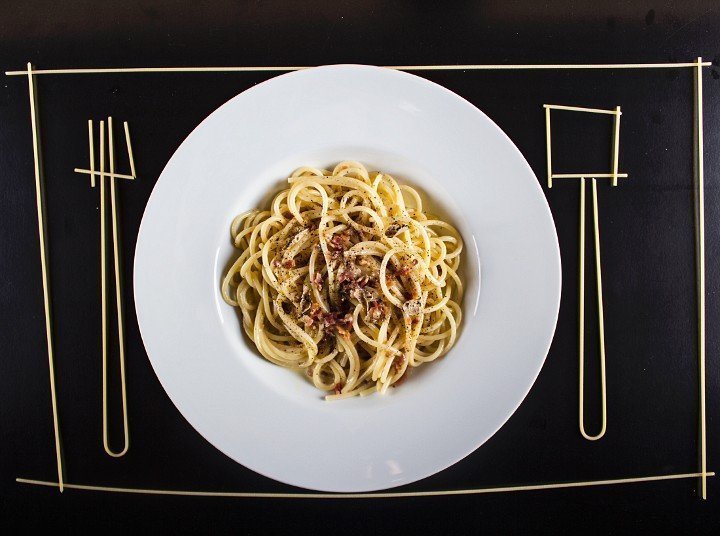Carbonara sauce is one of the most popular sauces of Italian cuisine and one that is used extensively in other countries. However, and for no apparent reason, the original recipe has been changed to such an extent that the majority of chefs that prepare carbonara sauce (including many Italian restaurants) do not respect its original version.
If we were to make a quick survey, everyone would agree that carbonara sauce incorporates bacon and cream. Many would also say it includes sautéed onions. However, purists would not concur with these responses since the original recipe does not include any of these ingredients.
The sauce is in fact made up of eggs, guanciale meat, pecorino cheese, salt and pepper, nothing more. Guanciale is Italian cured meat obtained from pork cheeks very typical in central Italy, especially in Umbria and Lacio. Only when it is impossible to secure guanciale, will bacon be used to prepare the sauce. Pecorino cheese is a cured sheep milk cheese (pecora means sheep in Italian) that has a touch of saltiness and provides a creamy texture to the sauce. Original carbonara is prepared with Pecorino Romano cheese, produced throughout history in Lacio but currently mostly produced in the island of Sardinia.
Preparation techniques for pasta alla carbonara vary, but here is the customary procedure. Once you have began boiling the pasta (usually it will be spaghetti but you can also use fettuccine) start by beating the eggs and adding the grated cheese. In a big pan start frying the guanciale or bacon cut into strips. When the pasta is ready and the guanciale is cooked, add the pasta to the pan and mix it with the guanciale. After, remove the pan from the heat and add the mix of cheese and egg so that it cooks with the remaining heat. It’s important to do this away from the stove to avoid overcooking the pasta and the egg and cheese mix. To finish, add salt and pepper.
As we can see, real carbonara is a very different sauce from the one found in most Italian restaurants. In countries like Spain, were this sauce has evolved into using cream and bacon, the main debate surrounds the adding or not adding of sautéed onions. In Madrid, capital city of Spain, we can recommend the Italian restaurant Don Giovanni where you will be able to taste real spaghetti carbonara prepared by chef Andrea Tumbarello, who will exit his kitchen to finish off the dish at your table.
The origins of carbonara sauce have been exposed over the years in different theories. On one hand, experts say this famous sauce originated from an Italian revolutionary secret society active during the early years of the 19th Century called La Carboneria. The Carbonarios would gather in the mountains and would prepare food with the ingredients they could collect such as eggs, sheep milk cheese and pasta. On the other hand, there are others who consider the sauce to be called carbonara because of the pepper used to season it that is suggestive of coal (carbone in Italian).
Finally, there is a theory that links the sauce to the US army. The story tells that a group of young American soldiers who were fighting in the II World War, tired of eating fried eggs with bacon every day, entered a home in Rome with a request for a new dish to be prepared with those same ingredients. Because no Roman home went without pasta (or cheese) this is how it is said that spaghetti carbonara came to be.
It’s clear that its historical origins are ambiguous and that in most cases the original recipe is not respected nowadays, but there is no doubt that this had been and still is one of the great dishes of Italian cuisine.

